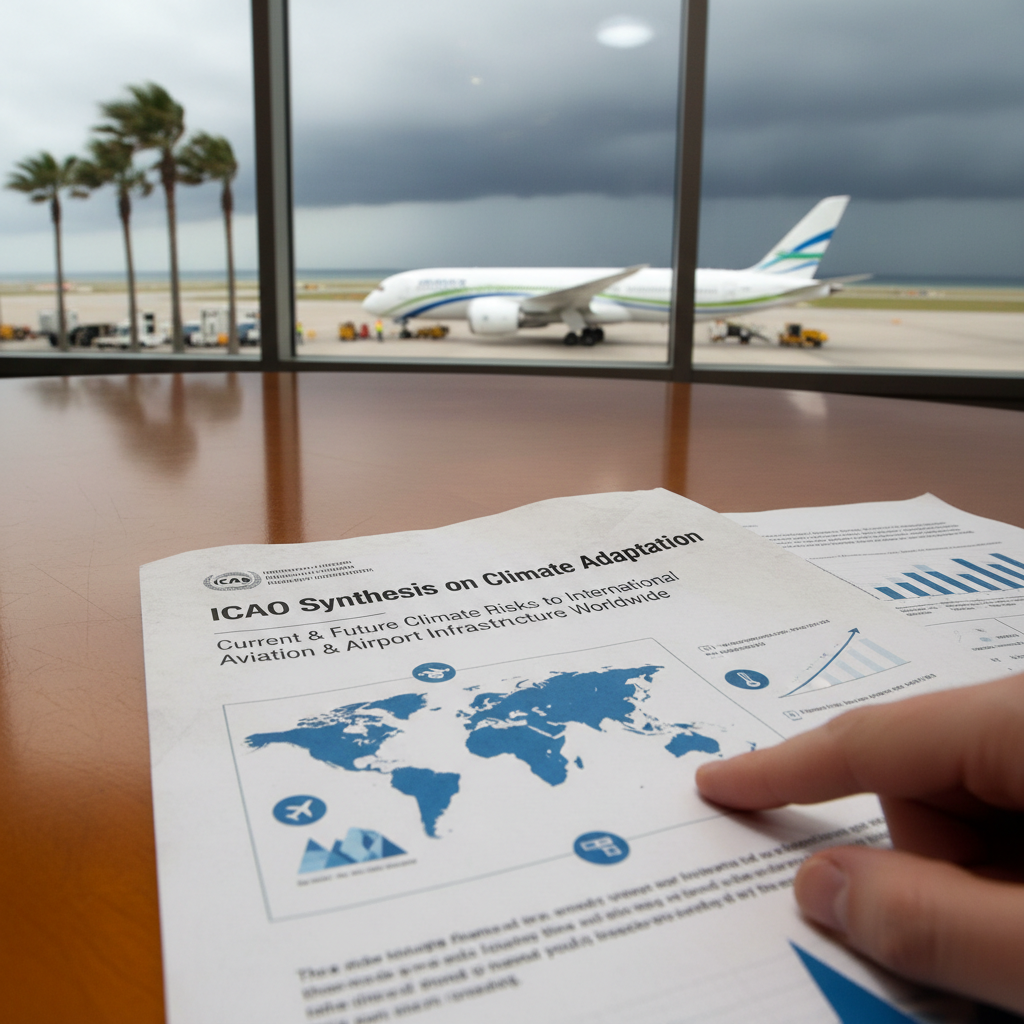Physical Address
304 North Cardinal St.
Dorchester Center, MA 02124
Physical Address
304 North Cardinal St.
Dorchester Center, MA 02124
Global aviation news tracker
Global aviation news tracker

ICAO’s new Climate Adaptation synthesis lays out practical steps aviation stakeholders can take to harden airports and operations against climate disruption.
The International Civil Aviation Organization (ICAO) has released a new edition of its Climate Adaptation synthesis, presenting an overview of present and emerging climate risks for global aviation. The report frames vulnerabilities across airports, air navigation services, and ground infrastructure while highlighting risk-management and resilience planning as sector priorities.
ICAO’s guidance stresses that climate impacts—like extreme heat, coastal flooding, and stronger storms—are already affecting airports and could disrupt operations more frequently. The synthesis positions adaptation alongside mitigation: cutting emissions remains vital, but so does preparing runways, terminals, and systems for changing weather patterns and sea-level rise.
The document is designed as a practical reference for regulators, airport operators, airlines, and policymakers. It promotes tools such as vulnerability mapping, scenario planning, and integrating climate risk into airport masterplans and investment decisions. For operators, simple steps like reviewing fuel-storage locations, electrical redundancies, and emergency response procedures are highlighted as high-impact, low-regret measures.
Importantly, the synthesis encourages cross-sector collaboration: airports should coordinate with local authorities, utilities, and air navigation service providers to ensure transport and supply chains remain functional during events. It also recommends data-sharing to improve weather forecasting and decision support for flight operations and ground handling.
For readers who care about the longevity of air travel and airport communities, the report reframes climate work as both a safety imperative and an operational necessity. Adopting adaptation measures now can reduce delays, avoid costly repairs, and safeguard passenger and staff safety when weather extremes strike.